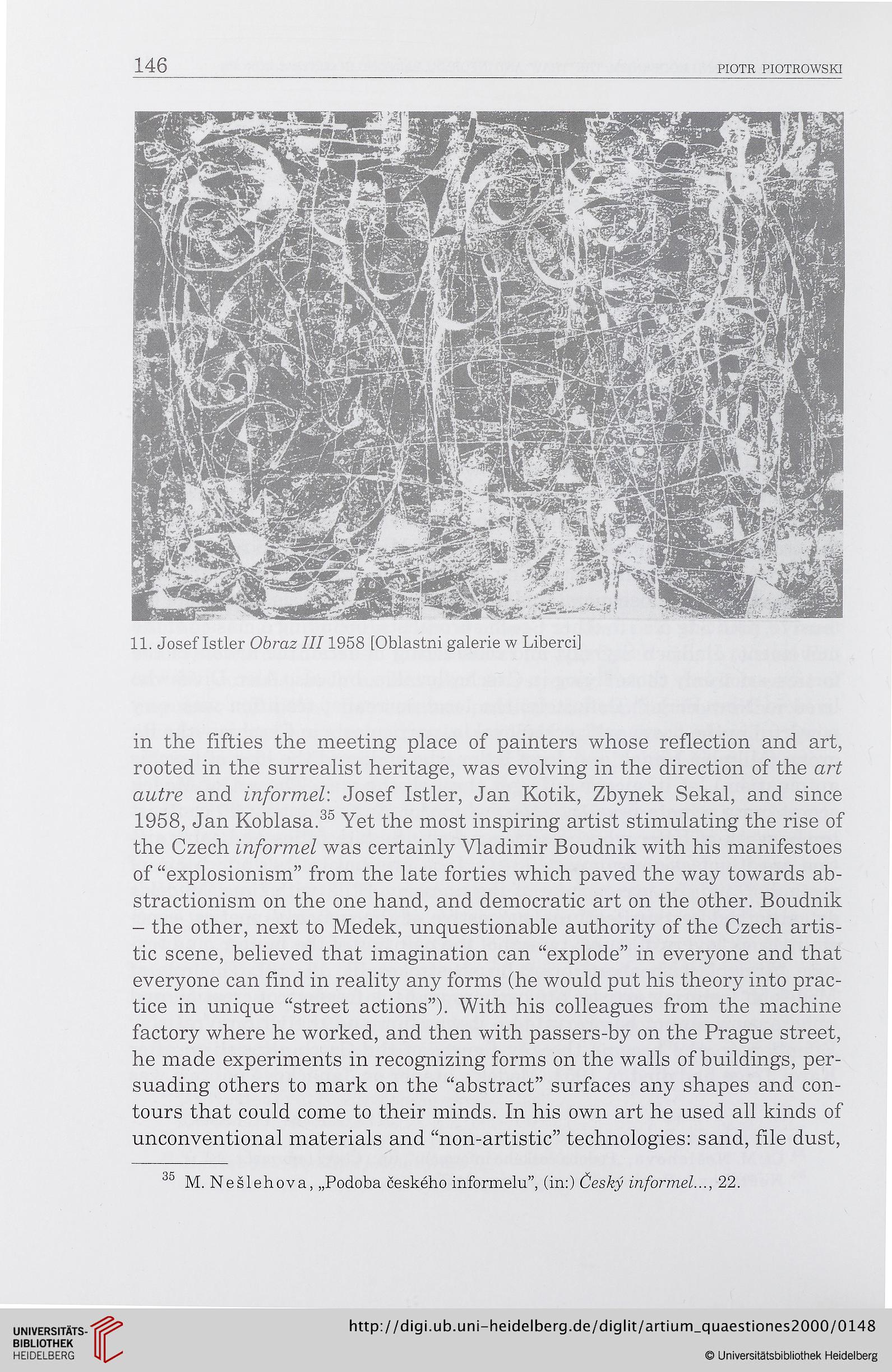146
PIOTR PIOTROWSKI
11. Josef Istler Obraz III1958 [Oblastni galerie w Liberci]
in the fifties the meeting place of painters whose reflection and art,
rooted in the surrealist héritage, was evolving in the direction of the art
autre and informel: Josef Istler, Jan Kotik, Zbynek Sekal, and since
1958, Jan Koblasa.35 Yet the most inspiring artist stimulating the rise of
the Czech informel was certainly Vladimir Boudnik with his manifestoes
of “explosionism” from the late forties which paved the way towards ab-
stractionism on the one hand, and démocratie art on the other. Boudnik
- the other, next to Medek, unquestionable authority of the Czech artis-
tic scene, believed that imagination can “explode” in everyone and that
everyone can fïnd in reality any forms (he would put his theory into prac-
tice in unique “street actions”). With his colleagues from the machine
factory where he worked, and then with passers-by on the Prague Street,
he made experiments in recognizing forms on the walls of buildings, per-
suading others to mark on the “abstract” surfaces any shapes and con-
tours that could corne to their minds. In his own art he used ail kinds of
unconventional materials and “non-artistic” technologies: sand, file dust,
35 M. Neslehova, „Podoba ceského informelu”, (in:) Ùeskÿ informel..., 22.
PIOTR PIOTROWSKI
11. Josef Istler Obraz III1958 [Oblastni galerie w Liberci]
in the fifties the meeting place of painters whose reflection and art,
rooted in the surrealist héritage, was evolving in the direction of the art
autre and informel: Josef Istler, Jan Kotik, Zbynek Sekal, and since
1958, Jan Koblasa.35 Yet the most inspiring artist stimulating the rise of
the Czech informel was certainly Vladimir Boudnik with his manifestoes
of “explosionism” from the late forties which paved the way towards ab-
stractionism on the one hand, and démocratie art on the other. Boudnik
- the other, next to Medek, unquestionable authority of the Czech artis-
tic scene, believed that imagination can “explode” in everyone and that
everyone can fïnd in reality any forms (he would put his theory into prac-
tice in unique “street actions”). With his colleagues from the machine
factory where he worked, and then with passers-by on the Prague Street,
he made experiments in recognizing forms on the walls of buildings, per-
suading others to mark on the “abstract” surfaces any shapes and con-
tours that could corne to their minds. In his own art he used ail kinds of
unconventional materials and “non-artistic” technologies: sand, file dust,
35 M. Neslehova, „Podoba ceského informelu”, (in:) Ùeskÿ informel..., 22.




